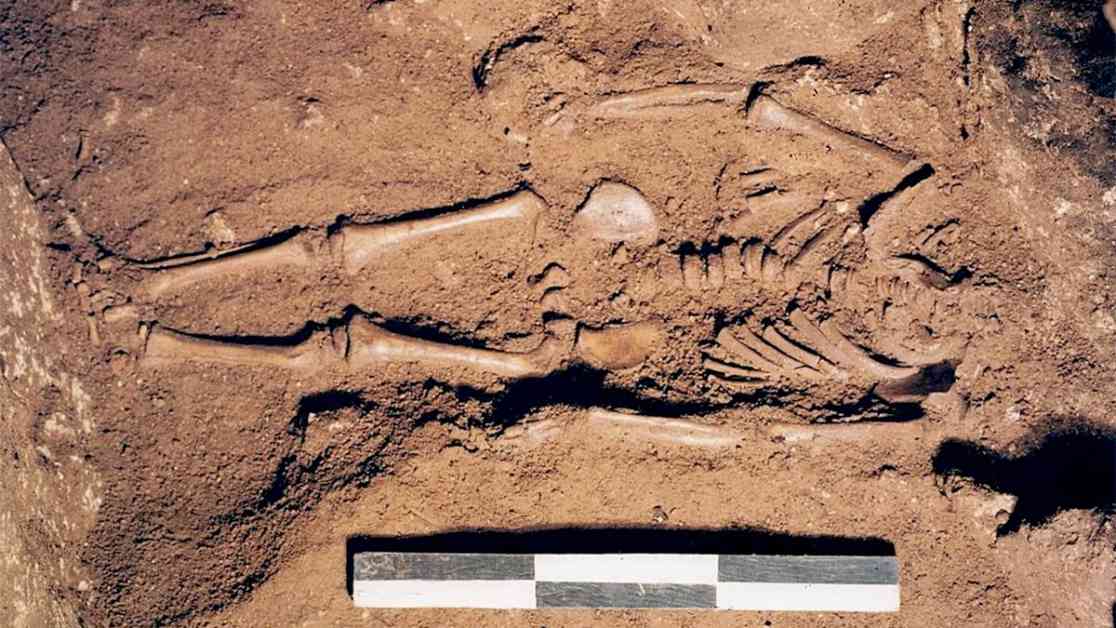In 1998, archaeologist Mauro Calattini discovered the remains of an ice age baby boy in a cave in Monopoli, Italy. The child, who lived around 17,000 years ago, likely died from a congenital heart disease. A recent study published in Nature Communications revealed that the baby boy had blue eyes, dark skin, and curly dark-brown to almost black hair.
The skeletal analysis showed that the child was about 1 year and 4 months old when he passed away. His teeth had nine accentuated lines, indicating physiological hardships experienced during his short life. The researchers, Owen Alexander Higgins and Alessandra Modi, noted that these hardships could have been a result of prenatal stress experienced by the child’s mother.
DNA analysis revealed mutations in genes related to heart muscle proteins, suggesting the baby may have had hypertrophic cardiomyopathy. The boy belonged to a group of ice age hunter-gatherers with genetic ties to the Villabruna cluster, indicating the presence of these groups in Italy before the end of the ice age. Inbreeding was common among these small ancestral groups, with the boy’s parents likely being first cousins.
The findings shed light on the lives of early humans in southern Italy and provide insight into their genetic makeup and health conditions. This discovery adds to our understanding of the populations that inhabited the region during the ice age and their survival strategies.
Soumya Sagar, a former neurosurgery researcher, is a passionate science writer with a keen interest in medicine, animals, archaeology, climate change, and history. His work has been featured in various publications, and he enjoys sharing his knowledge through writing. His diverse interests, including quizzing, Victorian literature, and noir movies, contribute to his unique perspective on scientific discoveries and historical events.










